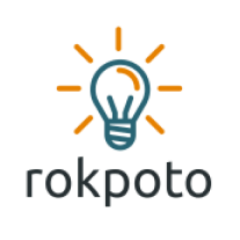Today, I’ll demo a sample Go Docker CI pipeline in GitLab. The pipeline will run on a sample Go containerized app. Hence the name Go Docker. If you later find this article useful take a look at the disclaimer for information on how to thank me.
Category: Automation
Use Ansible Vault in Python
So you want to use secrets stored in Ansible Vault in your Python apps. Let’s see how to do that. If you later find this article useful take a look at the disclaimer for information on how to thank me.
If you are not familiar with Ansible Vault, go over the brief introduction below.
Store secrets in Ansible Vault
So, you might already know that storing secrets in your source code is bad. Yet, your app uses secrets and must store them in source code repository. What can you do? You can opt for a fully fledged secret storage solution (e.g. HashiCorp Vault). Yet, this is an overkill for a simple app using secrets. What can you do? The simplest thing that comes to mind is encrypting the secrets and keeping them encrypted under source control. Ansible Vault allows just that.
Storing secrets in Ansible Vault step by step
- Create
vault.ymlfile and add your secrets in yaml format as below:
secret_name1: val1
secret_name2: val2- Next, create
multi_password_file. Add the password to the vault to the file and add it to.gitignore. This is the password which will encrypt the vault. Remember that if you lose this password file, you won’t be able to decrypt your Ansible vault. - Install
ansible. Installing it will installansible-vaultbinary as well and add it to your PATH. - Run
ansible-vault encrypt vault.yml --vault-password-file multi_password_fileto encrypt your vault. Afterwards,vault.ymlwill start with$ANSIBLE_VAULT;1.1;AES256and will contain just numbers. - Run
ansible-vault decrypt vault.yml --vault-password-file multi_password_fileto decrypt the vault. Then you’ll see your secrets in clear text. You can safely commitvault.ymlto source code repository.
Read Ansible Vault in Python
Now, let’s assume you want to use the secrets from Ansible Vault in your Python app or script. How can you read it? You can do that using ansible-vault package. Then use below Python code for reading the vault:
from pathlib import Path
from ansible_vault import Vault
vault = Vault((Path('multi_password_file').read_text()))
data = vault.load(open('vault.yml').read())
data is Python dictionary which contains the Ansible vault secrets in clear text which your app/script can use.
Summary
That’s it about using Ansible Vault in Python. As always feel free to share. If you found this article useful, take a look at the disclaimer for information on how to thank me.
You can also find below articles useful:
- Azure-cli in Dockerfile in Alpine
- Podman Jenkins Agent
- Go Docker CI in GitLab
- GitLab Parameterized Pipelines
Recommended Kubernetes books on Amazon:
Helm charts acceptance tests
I already covered how to test helm charts and different tests you may want to run. Today, I’ll focus on helm charts acceptance tests. If you later find this article useful take a look at the disclaimer for information on how to thank me.
Today, I’ll demo Kafka producer and consumer written in Python. We’ll see a fully working demo of producer and consumer running against Kafka in a docker-compose stack.
If you later find this article useful take a look at the disclaimer for information on how to thank me.
If you developed modern CI/CD pipelines you probably stumbled on the need to auto tag releases with semantic versions. Today I’ll show how to do that automatically and which tools may help to achieve automatic tagging releases with semantic versions.
If you later find this article useful take a look at the disclaimer for information on how to thank me.
Today, I’ll show how to create Kubernetes cluster on Linode using CLI. It might be useful, for instance, for CI/CD, automation processes, etc…
If you later find this article useful take a look at the disclaimer for information on how to thank me.
Today, I’ll show how to create and use Kubernetes operator using Ansible. I’ll also explain why to use Kubernetes operators and their relation to Kubernetes CRDs. As always, I’ll show a demo. If you later find this article useful read the disclaimer on ways to thank me.
GitLab Self-Hosted Runners Demo
In this post we’ll see how and why to use GitLab self-hosted runners. As always, I’ll show a practical demo of GitLab self-hosted runner which runs jobs in CI/CD pipelines. If you later find this article useful take a look at the disclaimer for information on how to thank me.
Podman Jenkins Agent
Today, I’ll show Podman Jenkins agent assuming Jenkins runs on Kubernetes. We’ll see Podman agent’s Dockerfile and CI/CD pipeline using it.
If you later find this article useful take a look at the disclaimer for information on how to thank me.
Migration from Jenkins to GitLab
Have you considered migration from Jenkins to GitLab? While working on CI/CD pipelines in Jenkins, you probably didn’t like coding them in Groovy. You wondered if any simpler CI/CD platform exists where you just have to worry about what commands to run in the pipelines. We’ll review important things to consider while planning migration from Jenkins to GitLab.
